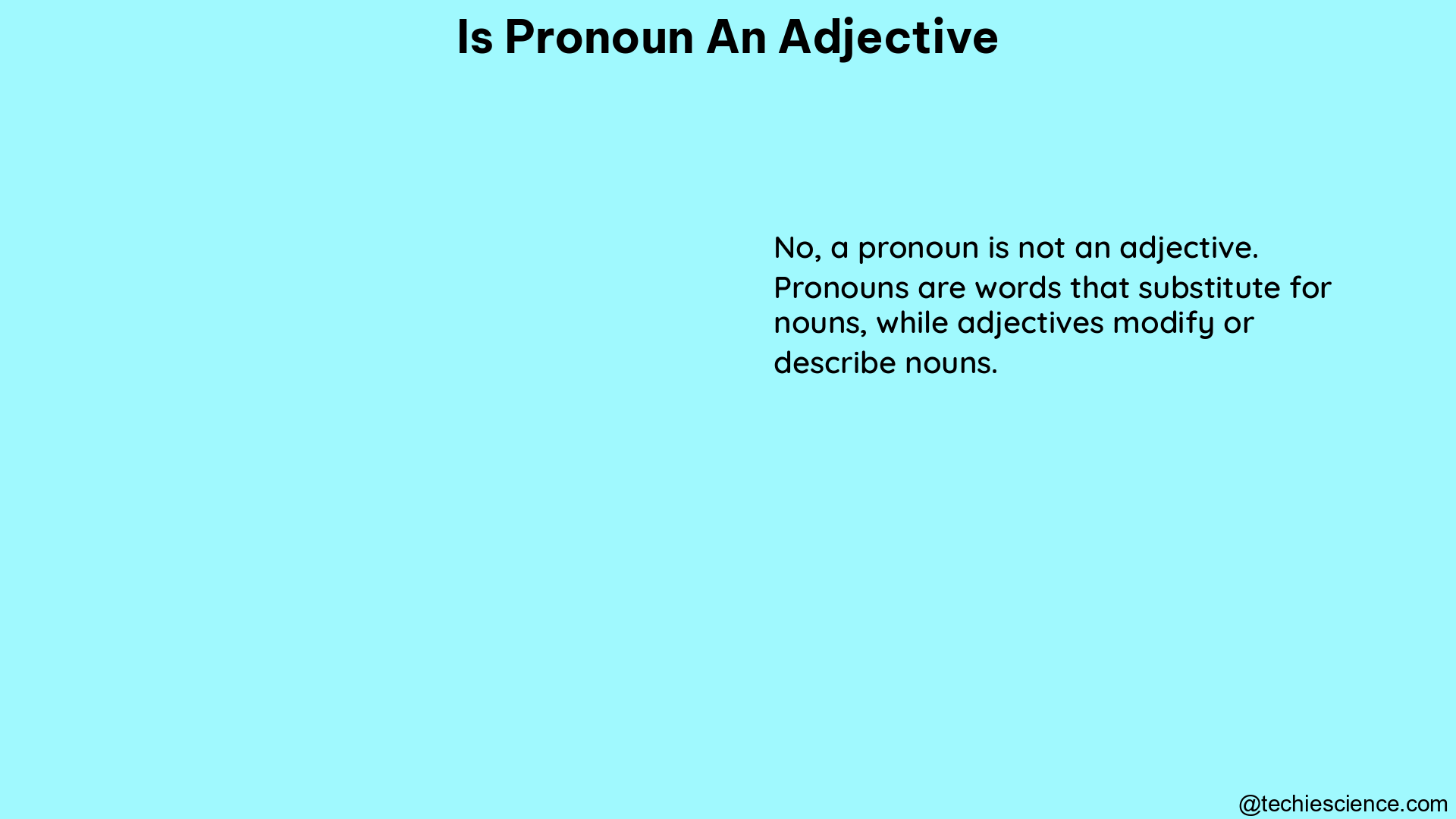The distinction between pronouns and adjectives in the English language can be nuanced, as some words can function as both, depending on the context. This comprehensive guide will delve into the key differences between pronouns and adjectives, explore the dual roles of certain words, provide examples of adjective-pronouns, and discuss the importance of contextual analysis in accurately identifying their usage.
Pronouns and Adjectives: Distinct Functions
Pronouns
Pronouns are words that replace nouns in a sentence, referring back to a previously mentioned noun or pronoun. They have the same properties as nouns, including person, number, gender, and case. Pronouns serve to avoid repetition and maintain the flow of the sentence. Examples of pronouns include “I,” “you,” “he,” “she,” “it,” “we,” “they,” “me,” “him,” “her,” “us,” and “them.”
Adjectives
Adjectives, on the other hand, are words that modify nouns or pronouns, adding descriptive qualities to them. Adjectives provide more information about the noun or pronoun, such as its size, color, age, or any other characteristic. Examples of adjectives include “big,” “red,” “old,” “beautiful,” “intelligent,” and “friendly.”
Words with Dual Roles: Adjectives and Pronouns

Some words in the English language can function as both adjectives and pronouns, depending on the context in which they are used. These words are often referred to as “adjective-pronouns” or “pronominal adjectives.”
Demonstrative Words
Demonstrative words, such as “this,” “that,” “these,” and “those,” can be used as adjectives when they modify nouns, or as pronouns when they stand alone and replace a noun. For example:
- “This book is interesting.” (Adjective)
- “This is my favorite book.” (Pronoun)
Possessive Words
Possessive words, such as “my,” “your,” “his,” “her,” “its,” “our,” and “their,” can be considered either possessive adjectives or possessive pronouns, depending on the authority and the specific context.
- “My car is blue.” (Possessive adjective)
- “This is mine.” (Possessive pronoun)
Examples of Adjective-Pronouns
In addition to the demonstrative and possessive words, there are other words that can function as both adjectives and pronouns. These include:
- Each, either, and neither: These words can be used as adjective-pronouns that relate to objects taken singly.
- “Each student received a certificate.” (Adjective)
- “Each of the students received a certificate.” (Pronoun)
- This, these, that, and those: These demonstrative words can be used as both adjectives and pronouns, depending on the context.
- “This book is interesting.” (Adjective)
- “This is my favorite book.” (Pronoun)
Contextual Analysis: Determining Adjectives and Pronouns
To accurately identify whether a word is being used as an adjective or a pronoun, it is essential to analyze the sentence structure and the word’s relationship to the nouns or pronouns around it. This contextual analysis can help you determine the correct grammatical function of the word.
For example, the word “which” can be used as both a pronoun and an adjective:
- “Which dessert did you choose?” (Adjective)
- “I don’t know which one is yours.” (Pronoun)
In the first sentence, “which” is an adjective modifying the noun “dessert.” In the second sentence, “which” is a pronoun standing alone and replacing the noun.
Importance of Understanding Adjectives and Pronouns
Accurately identifying the grammatical function of words, whether they are adjectives or pronouns, is crucial for effective communication and understanding the nuances of the English language. This knowledge can help you:
- Improve your writing and speaking skills by using the correct grammatical forms.
- Enhance your reading comprehension by accurately interpreting the meaning and relationships between words in a sentence.
- Develop a deeper understanding of the English language and its grammatical structures.
- Effectively communicate your ideas and convey your intended meaning to your audience.
Conclusion
In conclusion, the question of whether a pronoun is an adjective is a nuanced one in English grammar. While some words can function as both adjectives and pronouns, their roles are distinct and depend on the context in which they are used. By understanding the key differences between pronouns and adjectives, exploring the dual roles of certain words, and practicing contextual analysis, you can develop a strong grasp of this important grammatical concept and enhance your overall proficiency in the English language.
References
- Adjective-Pronouns: When Do You Use an Adjective vs. a Pronoun?
- Is the Word “Which” a Pronoun or an Adjective?
- Adjective-Pronouns
- Adjective-Pronoun
- Pronouns vs. Adjectives: What’s the Difference?

Hi…..I’m a graduate with a Bachelor’s degree in English Literature. I wish to do a Masters in the same field someday and continue my career in Academia.
Let’s connect through LinkedIn: